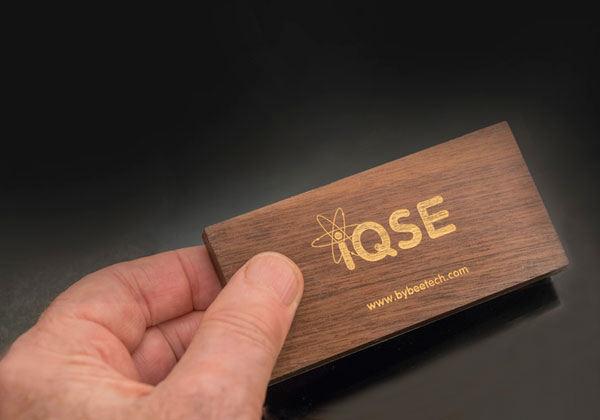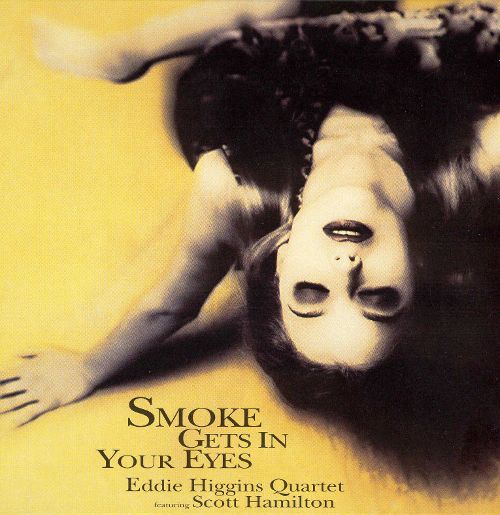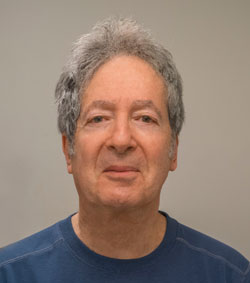Bybee Technologies iQSE

After speaking over the phone with Mike Girardi about his Bybee iQSE experience after an initial purchase, I asked if he’d be willing to write a review. He obliged. If you’re a long time reader of these pages, you’re probably aware that when someone here writes about a Bybee product, it’s either myself, David Caplan or Russell Lichter. Truth of the matter is, Bybee products work effectively under a variety of different situations and setups. Ironically, Mike Girardi just so happens to be the latest writer I spoke with on the illustrious sonic benefits awarded by Jack Bybee’s latest, most affordable – and easily the most impressive product he’s released to date: The Bybee Internal Quantum Signal Enhancer or iQSE. Instead of the usual suspects waxing poetic over the sonic improvements by way of placing these devices in or near your components, Mike’s experience should suffice since they mimic mine almost to the letter.
However, I should state for the record…
Simply placing a single iQSE internally (underneath the top cover) of my 32 Core Memory Player, Behold BPA768 amplifier (2) and Behold preamp, removed so much distortion and inherent noises that it made it almost impossible to believe. Consider for years that one of the earmarks of my system and Behold in particular, is how quiet it is (compliments of a super-low noise-floor). The installation of just a few iQSE’s demonstrated just how much noise still makes it way through. The remarkably improved sense of buoyancy and ease that overtook each recording – by further lowering the noise floor – was stunning. String tone improved while resolution seemed to take on a new meaning. Standard Redbook 16/44 files somehow took on the quality of DSD files in the sense that the music seemed filled with more vibrant colors coupled with a meatier and more dense midrange. High frequencies have more delicacy, sparkle and appear to have greater extension. The low end sounds earthier in overall grip, tone and harmonics. Another dozen, placed externally and strategically around my listening space (on the walls and loudspeakers), further lowered the noise while it also increased the soundstage and dimensionality in my modest listening space to a degree that is absolutely stunning. I could go on and on detailing the improvements made by the iQSE’s but found Mike Girardi’s review quite refreshing and revealing of this technology. Highly Recommended!
Clement Perry

I’m no stranger to Bybee Technologies. Back in 2001, I first installed a Bybee Quantum filter internally in my PS Audio Power Plant and was stunned by the effect it had on my system’s noise floor. Later installed multiple Bybee Quantum filters on the plus and minus terminals of the speaker drivers on my Talon Audio Korus MKll which also improved the performance of this great speaker as well. I first learned about the Bybee Technologies IQSE from our esteemed publisher, Clement Perry. Since being part of The Stereo Times staff for over the last 14 years, Clement hasn’t been this excited about the many products that have been reviewed as he has been about the IQSE product. Bearing this in mind, I had to try the Bybee Technologies iQSEs for myself. The Bybee Technologies iQSE is part of the newly introduced “Crystal Series” products that interact with Carbon C13 atoms present in matter thereby creating a magnetic field effect. In this magnetic field, the polarity of all electrons and protons are altered, affecting their oscillation by making them more aligned with each other, which results in the transfer or sharing of electrons between atoms more streamlined and efficient. In audio, the net effect is less “noise” in the current/signal path and the air molecules within the listen room are less excited, making them less resistant to the sound waves (in both cases less signal/sound compression).

At $150 each, the iQSE consists of a 2” x 4” x 1/4” finished block of wood that contains engineered crystals suspended in epoxy with a magnetic sheet attached on one side. The iQSEs can be strategically placed on the listening room walls, floor and ceiling, inside or outside of a component (the effect is magnified when placed inside) and in/on circuit breaker panels. Digital circuitry responds well to placement near voltage regulators, DACs, and DSPs. Benefit to video signals are also possible when iQSEs are placed near TV electronics, cable boxes, on DVD players, etc. Proper application requires that the labeled side is placed facing open space or at least not placed facing the chassis. Some experimentation relative to each component is recommended but placement near the incoming component ac power input is a good place to start.
I will start by baselining my system sans the iQSE. I will try then to add the iQSE in phases; first to the front end digital components and speakers, second to the amplifier and electrical breaker panel, and finally to the listening room walls, floor, and ceiling. Allowance for component stabilization following the addition of each iQSE implementation phase will be maintained throughout the review.
Your System on Carbon C13 Alignment

My reviewing system includes the Uptone JS-2 Linear Power Supply for Qnap TS-251+ NAS drive, Ayon Audio S-5 Network Player/Preamplifier, Ayon Audio Odin III Gen 4 SET amplifier fitted with Tungsram signal tubes, Tidal Audio Impact amplifier, Acoustic Zen Crescendo MKII loudspeakers, SOtM dBCL-CAT7 Special Edition Ethernet cable/filter block, Revelation Audio Labs Prophecy CryoSilve Reference CAT7+/RJ-45 i2s Ethernet Digital Link Ethernet cable, REL R-528SE subwoofer, SR Galileo UEF speaker, interconnects, and ac power cords, SR CTS Element REL SPEC Subwoofer Reference cable, SR PowerCell 12 UEF, SR UEF Black outlets, SR HFTs, SR Atmosphere XL, SR FEQ, SR Active SE Grounding Block and HDG cables, SR Black Box, SR MiG 2.0 isolation footers, and SR Tranquility Bases UEF. My AZ Crescendo speakers are 34” from the front wall with the listening position 8 feet from the front baffle. My listening area is 14.5’ wide, has a 9’ ceiling, and has an open back wall to 1500 sq ft of first floor living area.

I started by installing the iQSE’s on my front end components and Acoustic Zen Crescendo speakers in my system. I placed one iQSE on the center of the top plate on my Uptone Audio JS-2 linear power supply that feeds the NAS drive dc power, one iQSE within the QNAP NAS drive, one iQSE on the top of the Ayon Audio S-5 Network Player/Preamp power supply, and one iQSE on the back of each AZ Crescendo loudspeaker near the binding posts and speaker crossovers. Being familiar with the sixth and seventh cuts from Eddie Higgins Quartet’s “When Smoke Gets in Your Eyes.” I immediately noticed the soundstage depth was enhanced, the sax and bass guitar images were better defined, and the grand piano had a greater sense of space. What really stood out for me with the iQSE’s installed was the depth of the piano within the soundstage, the presence and size of the sax, the solidity of the bass notes, and how my AZ Crescendo speakers now performed a disappearing act. With the lower noise floor, I was now able to set my Ayon Audio S-5 Network Player/Preamp to the “high gain” setting on all recordings without sounding brittle and harsh, which is a testament to how effective the iQSE are at removing distortion. My fine-tuned Indy 500 sports car of a system benefited greatly by the addition of numerous (6) Bybee Technologies iQSE’s.
In the middle of the review, I swapped in my Tidal Audio Impact solid state amplifier. My son, who plays the saxophone in the KU Marching Band first noticed when I first installed the Tidal Audio Impact in my system, that the overall system clarity was less than that of my previous vacuum tube reference amplifier. I didn’t notice this at first, but being thirty years older than my son, I’m sure his hearing is more accurate than mine. It comes down to the Tidal Audio Impact amplifier is even more ruthless at revealing the signal distortion and compression sans the iQSEs and doesn’t have the extensive power supply filtration as compared to my previous reference. As I added more iQSEs (6) externally to the Tidal amplifier and to my electrical breaker panel , the noise floor dropped to a point that my system had greater clarity, the leanness in midrange was gone, and overall my system was more natural at the same time. My son agreed the improvements brought by the iQSE’s were real and fundamental. The iQSE’s didn’t change the tonal balance, but added a seductive richness to the music while removing a level of white noise that rode within the music. One might say the iQSE’s allowed my system components to operate to their full potential in terms of musicality and transparency.

Given that my unique listening room set-up is already treated with thirty Synergistic Research HFTS, an SR Atmosphere XL, and one SR FEQ, I wondered how the SR tweaks would interact with the Bybee Technologies iQSEs given that the SR technology is designed to create a uniform energy field and the Bybee Technologies iQSE’s reduce the resistance of the air to soundwaves. After installing eight iQSE’s on the front and sidewalls and one on the floor and ceiling of my listening room and allowed the air molecules within my listening room time to stabilize, I had one of those rare holy sh*t moments that you experience when a fundamental sound improvements is heard. Listening to Claire Martin, “Black Coffee” from the Too Darn Hot album brought a new meaning to live sound in my family room off the kitchen. Claire’s voice wasn’t just localized between the speakers, but now projected across the length and width of the room. The bass response extended at least one octave lower with individual notes better differentiated and the piano extended well beyond the back wall of my listen room. The time alignment at all frequencies seemed more accurate, resulting in the music being more coherent with the iQSEs treating the room. I heard exactly what Clement Perry meant by the high frequencies taking on a new form. Instead of the high frequencies riding on top of the music signal, they now became fully integrated within the music signal. With the 20 iQSEs installed, I’m now able to turn the volume up of my system to levels previously confounded by distortion.
This is off topic, but during the review period, Jack Bybee recommended I install an iQSE in each front door panel and at the back of the trunk (inside) of my car. Allowing for overnight stabilization of the iQSEs, the handling, ride, smoothness of gear shifting, and throttle response on my heavily modified turbo charged 2011 Buick Regal T07 Russelsheim which is equipped with magnetic ride control and fuel injection was improved for the better. Compared to competing products offered in the market place which I have experience with, the Bybee Technologies iQSEs offered a much greater bang for the buck performance.
Conclusion
The sonic improvements described above were the result of the cumulative effects of using all twenty review samples, which resulted in a fundamental change. The iQSE’s delivered on all levels and exceeded my expectations. As far as a room treatment, I have had the Shatki Holographs and the Stein Harmonizers/Stones in my system and compared to the Bybee Technology iQSEs there is no comparison. The Bybee iQSEs are that good. I would venture to say that music systems at all levels (entry, mid, and state of the art) would benefit from the iQSE’s. Highly recommended.


Mike Girardi
Second Opinion: Bybee iQSE’s – The tweak that works everywhere!
 Jack Bybee sent me a very interesting new product he has developed. He told me that he went into his heart doctor to have his yearly check up and when the doctor finished his exam, Jack asked him
Jack Bybee sent me a very interesting new product he has developed. He told me that he went into his heart doctor to have his yearly check up and when the doctor finished his exam, Jack asked him
if he could do an experiment and put one of the iQSE’s on the power cord of the electro cardiogram machine. The doctor and Jack were both amazed that the image suddenly increased in resolution. After hearing that story I was a little skeptical but was curious to try them out in my audio system.
 Jack sent me 6 iQSEs and what I liked about them was their small size, measuring just 2”x4” inches and 3/8 “ thick with a nice walnut finish. They are designed to be put inside or on top or underneath electronic components like DACs amplifiers etc., even TVs. They can be placed under the top cover and their field radiates into the circuits boards neutralizing the noise levels. I put one in my Wells Reference amp and listened to Cantata Domino. There were across the board improvements. I took the IQSE out of the amp and placed it on the amps power cord and listened to the same cut again. For me it was too close to call which position worked best, inside the amp won by a slight margin but either under or on top of components or on power cords is an extremely effective and easier way to use them. On my digital set up, I opted to place them in various positions on top and underneath of my PS Audio direct stream DSD DAC and new PS Direct Stream Memory Player. The improvement in sound quality I got was immediate. These iQSE devices improved the harmonics, the depth and dimensionality of my system in a very noticeable manner. What I found in my heavily tweaked system is careful placement can take a lot of time but for me the end results are worth it. The thing about the iQSEs is they can fit everywhere and are remarkably effective and easy to position.
Jack sent me 6 iQSEs and what I liked about them was their small size, measuring just 2”x4” inches and 3/8 “ thick with a nice walnut finish. They are designed to be put inside or on top or underneath electronic components like DACs amplifiers etc., even TVs. They can be placed under the top cover and their field radiates into the circuits boards neutralizing the noise levels. I put one in my Wells Reference amp and listened to Cantata Domino. There were across the board improvements. I took the IQSE out of the amp and placed it on the amps power cord and listened to the same cut again. For me it was too close to call which position worked best, inside the amp won by a slight margin but either under or on top of components or on power cords is an extremely effective and easier way to use them. On my digital set up, I opted to place them in various positions on top and underneath of my PS Audio direct stream DSD DAC and new PS Direct Stream Memory Player. The improvement in sound quality I got was immediate. These iQSE devices improved the harmonics, the depth and dimensionality of my system in a very noticeable manner. What I found in my heavily tweaked system is careful placement can take a lot of time but for me the end results are worth it. The thing about the iQSEs is they can fit everywhere and are remarkably effective and easy to position.
Recently Bybee (the man) experimented with them on wall positions and I can verify that in my room they work great that way. They add depth and separation of instruments, more natural vocals and they render a richer tonal color which made Sinatra Live at the Sands sound even more live and engaging.
I brought 3 over to try on a friends system. I started by putting one iQSE on his power box door since it is non conductive and it was safe to use without violating code.
The improvement of the entire system was amazing with just one $150 iQSE. We then decided to try 2 more IQSEs on the AC cords and under his components and then we listened to the famous Muddy Waters album, Folk Singer. The vocals and depth had a definite increase in clarity and then we put one on the AC cord to his amplifier. Again, I heard similar improvements to the sound, similar to what I heard on my system. The Bybee iQSE’s really work just about everywhere and are a remarkable bargain for the improvements they bring.

david caplan
Specifications:
Retail: $150 each
Website: www.bybeetech.com
Stereo Times Masthead
Publisher/Founder
Clement Perry
Editor
Dave Thomas
Senior Editors
Frank Alles, Mike Girardi, Russell Lichter, Terry London, Moreno Mitchell, Paul Szabady, Bill Wells, Mike Wright, and Stephen Yan,
Current Contributors
David Abramson, Tim Barrall, Dave Allison, Ron Cook, Lewis Dardick, John Hoffman, Dan Secula, Don Shaulis, Greg Simmons, Eric Teh, Greg Voth, Richard Willie, Ed Van Winkle, Rob Dockery, Richard Doron, and Daveed Turek
Site Management Clement Perry
Ad Designer: Martin Perry





Be the first to comment on: Bybee Technologies iQSE